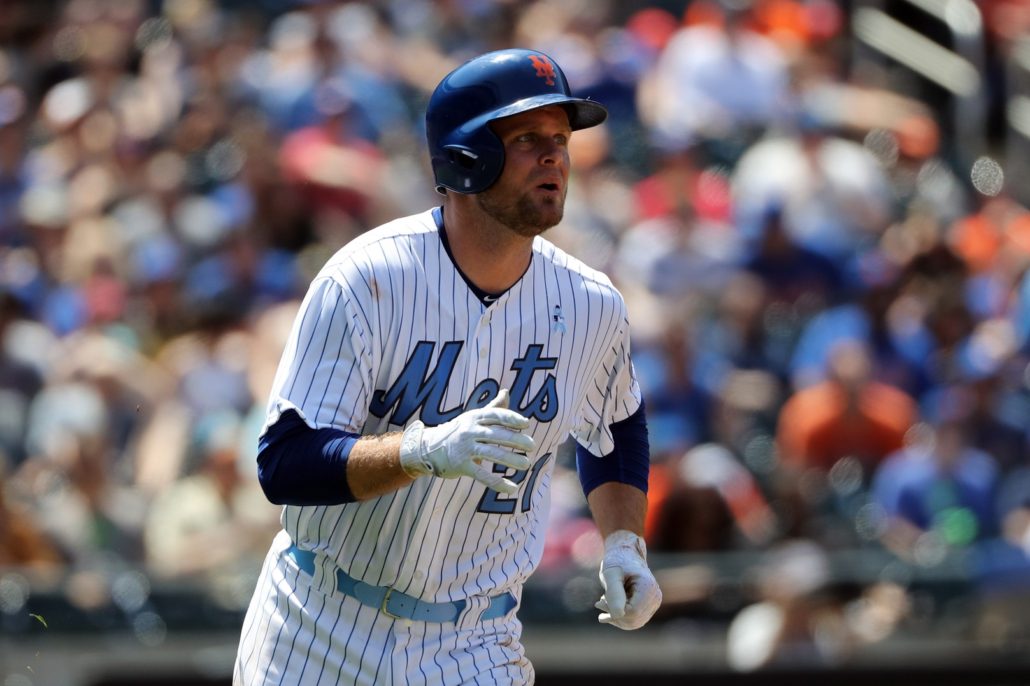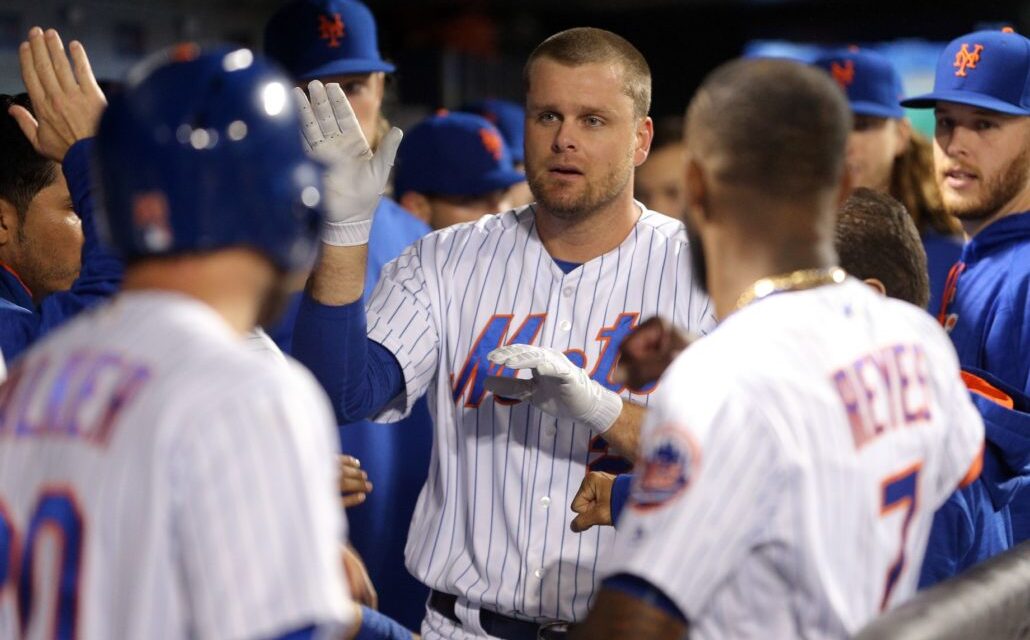
As the MLB Lockout drags on, it’s becoming more of a challenge to keep actual baseball in our lives on a daily basis during a time when we should be enjoying it. You know, assuming there will be a season to actually enjoy. I’ve been fighting this challenge all winter, which naturally brought me to watching Lucas Duda highlights over the weekend.
Before Yoenis Cespedes got hot, Lucas Duda helped carry the #Mets' offense back to first place in 2015. Over an eight-game span from 7/25-8/2, he slashed .393/.452/1.393 (!) with 9 homers and 12 RBI. #LGM (via MLB) pic.twitter.com/evKBpZ2A76
— Matt Musico (@mmusico8) March 5, 2022
There were plenty of people who shared in my appreciation for Duda’s tear at the end of July and early August, as well as how he contributed to the New York Mets overall during his time in Flushing. There was also a fair amount of criticism for his streakiness. Some even mentioned he wasn’t that good and only certain parts of Mets Twitter held him in high regard for no reason.
I’m not on a crusade to prove people wrong — Duda certainly wasn’t a perfect player — but I did want to take some time and appreciate the contributions he made for New York. I mostly want to talk about his 2015 campaign, but I’ll also include his 30-homer performance from 2014 because, well, why not?
Even with the flaws in Duda’s game, I’ve talked in the past about how his performance with the Mets flies under the radar (that seems to happen with a number of New York first basemen, but that’s a conversation for another day, I suppose). That’s especially the case regarding his 2014 and 2015 seasons. He posted the only 3.0 fWAR performances of his career and slugged 57 of his 156 home runs during this time. Although he played in 18 fewer games in 2015, his 3.2 fWAR in that campaign was his single-season career-high mark.
While he’s been known to hit “meaningless” home runs — I put it in quotes because no home runs are meaningless, in this author’s opinion — I forgot how absurdly hot he could get over a short period of time. The above tweet is proof of that. Sure, his 27 homers from 2015 came in just 19 different games since he racked up seven multi-homer performances, but I don’t see how that can truly be criticism for him. If Duda didn’t have any multi-homer games, would it look that much better if he hit his dingers in 27 different games? Not really.

Plus, there’s more to offensive production than just hitting home runs, as we all know. August was the only month he didn’t appear in at least 20 games during the 2015 season, and his overall production seemed pretty consistent. June was Duda’s worst month — he posted a .574 OPS and 64 wRC+ during that time — but the rest was actually quite good. He owned an OPS above .900 and a wRC+ above 155 in four different months. The one other time he didn’t? That’d be July when he managed a .749 OPS and 106 wRC+ despite a .178 batting average and a 36.0% strikeout rate.
Does that mean he was consistent in all aspects of his game? Well, no — of course not. He very much enjoyed hitting at Citi Field, as evidenced by his .275/.388/.611 line and 178 wRC+. He very much didn’t enjoy hitting on the road, as evidenced by his .215/.317/.368 line and 88 wRC+. Duda’s production also consistently tailed off as the situation went from being low leverage (157 wRC+) to medium leverage (109 wRC+) and high leverage (95).
Do you know what he was typically consistent with, though? A couple of things: his performance against right-handers and left-handers, as well as whether there were runners on base or not.
Against southpaws, Duda posted a .878 OPS and 144 wRC+, along with a .823 OPS and 129 wRC+ against right-handers. With the bases empty, the first baseman produced a .907 OPS and 153 wRC+. When runners were on base, those numbers were .746 and 107, respectively. When those runners were in scoring position, those numbers were .812 and 119, respectively.
Looking to the postseason, Duda’s performance wasn’t terrific in the NLDS (.311 OPS) or World Series (.581 OPS), but he did play a role in helping sweep the Chicago Cubs out of the NLCS (1.355 OPS). He drove in six runs, and of the four hits he recorded, three went for extra bases (one homer and two doubles). If Daniel Murphy didn’t turn into Babe Ruth, he would’ve had a great shot at winning series MVP honors.
So, what’s the point here? I know Duda was far from the perfect player and he was pretty streaky. His flaws as a players were more apparent once New York traded him in 2017. However, he was not “bad” or “terrible”, which were two words I saw thrown around more often than I expected this past weekend — especially from 2014-15. For someone who came up and had Ike Davis in front of him on the first base depth chart, he ended up putting together a decent career with the Mets. And, if it wasn’t for an errant throw home during Game 5 of the 2015 World Series, he probably would be remembered more fondly by Mets fans.
















